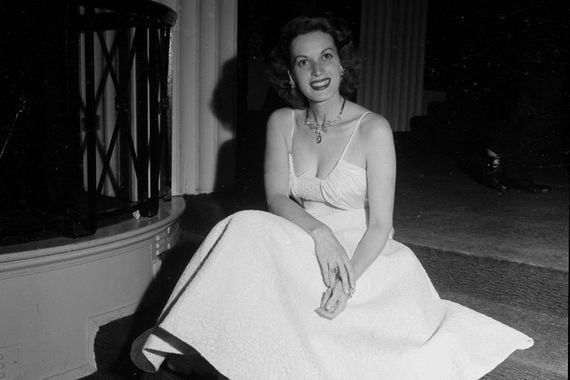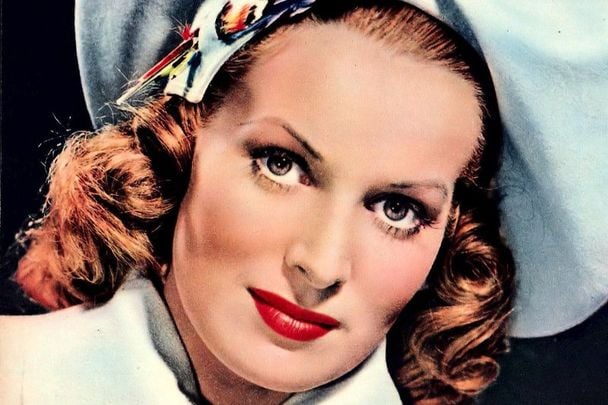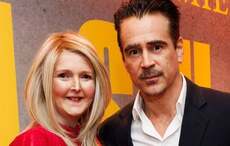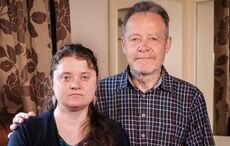Maureen O'Hara's marriages were far from plain sailing. Did you know about the various loves of her life?
On the big screen, the late Irish actress Maureen O’Hara was famous for playing fiery heroines who put leading men in their place. Her real-life romances, however, were a very different story.
In her autobiography, “’Tis Herself,” published in 2004 when she was 84 years old, O’Hara opened up about her personal journey and private life. In the introduction, she acknowledged that many of her fans and readers would be surprised once they learned what she endured in her first two marriages.
“Above all else, deep in my soul, I'm a tough Irishwoman.
"Being an Irishwoman means many things to me. An Irishwoman is strong and feisty. She has guts and stands up for what she believes in. She believes she is the best at whatever she does and proceeds through life with that knowledge. She can face any hazard that life throws her way and stay with it until she wins. She is loyal to her kinsmen and accepting of others. She's not above a sock in the jaw if you have it coming. She is only on her knees before God.
"Yes, I am most definitely an Irishwoman.
“My heritage has been my grounding, and it has brought me peace. Being tough and strong have always been my most dominant characteristics, like a fire that burns deep within me. I have always believed that I can do anything I set my mind to, as long as I'm willing to make the necessary sacrifices.
"I have called upon this fire to achieve my goals and survive whenever I felt my world come crashing down around me. In this way, I am like many of the women I've played on-screen.
“And yet you will soon read about two events in my life that caused me to stumble and do exactly the opposite of what you and I would expect Maureen O'Hara to do. They involve my first two marriages and may jolt you. One was a comedy of youth, but the other was a tragedy of inexperience.”
O’Hara was tricked into her first marriage, spent her second one attempting to protect herself and her daughter from her a dangerously alcoholic and abusive man, and finally found love twice later in life only to have both relationships meet unfortunate ends; the second much more tragic than the first.

Maureen O'Hara, photographed in 1954.
Here’s a look at Maureen O’Hara’s husbands and loves, as she described them:
George Brown
Here’s how O’Hara introduces the subject of George Brown, whom she met while filming her first motion picture, “Jamaica Inn.” Even though she was preoccupied with the work and her role, she explains, she was expected to date. “There was one date, however, I never should have gone on.”
That date was with George Brown, one of the production men. He would go on to be a noted British film writer and producer, and the father of media mogul Tina Brown, but not before a brief, oddly passionless sounding, relationship with a 17-year-old Maureen O’Hara.
Their first date - horseback riding - sounds romantic in theory, but according to O’Hara, “It was a disaster. We could only exchange polite pleasantries and talk about work. There were no sparks whatsoever. Plus, it’s hard to talk when you’re horseback riding.”
Despite O’Hara’s busy schedule and the watchful eye of her aunt Florence, they went on a few more dates, the young O’Hara agreeing mostly because she didn’t want to upset the friend who had set them up. She assumed that once she returned to Dublin that would be the end of it, especially because she was due to set sail for the US with her mother and begin work on “The Hunchback of Notre Dame.”
The day they were leaving aboard The Queen Mary, O’Hara writes that Brown called her incessantly, declaring his love for her, asking her to marry him, and, when she declined, asking to see her one last time. O’Hara agreed, took a taxi to the address Brown had given her, and O’Hara asked it to wait outside. Inside, she found Brown and a man ready to marry them. O’Hara describes her intellect separating from the rest of her body as she numbly goes through with the ceremony, deciding that stopping to argue with him might make her miss the boat.
O’Hara said nothing to her family, but the following day, out at sea, her mother realized something was wrong because her daughter was uncharacteristically quiet. When O’Hara finally broke down and told her, as well as Charles Laughton, to whose film company she was signed, they told her not to tell anyone else so as to avoid a scandal, and that it would be taken care of.
Indeed, their wedding day was the last time O’Hara and Brown saw each other. Their marriage’s annulment was delayed due to the outbreak of WWII, but on September 15, 1941, it was officially annulled.

Love Irish history? Share your favorite stories with other history buffs in the IrishCentral History Facebook group.
William Houston Price
The event that spurred on O’Hara’s filing for an annulment from her marriage to Brown was her impending marriage to screenwriter Will Price. According to O’Hara, the relationship began as a rather one-sided one, just like her first.
For O’Hara, it was a matter of companionship. Price, however, was asking her to marry him from very early on and suggested that her lingering link with Brown indicated that she was not serious about their relationship. Instead of giving him the brush off, O’Hara acquiesced, again mystifying her older, wiser self.
“During this period in my life, when it comes to my relationship with men, I don’t still fully understand the decisions I made,” she writes. “How could I have made the same mistake again? I was a strong-willed, bright young woman who I thought had her head on straight. I didn’t let anyone push me into things I didn’t want to do where my career was concerned. So why did I crumble when it came to men?
“The best rationale I’ve come up with is that I was too naïve and inexperienced. I had always been a tomboy – I still am, at heart – and had never had a real boyfriend. At the age of twenty, I still didn’t know how to properly read the interests, intentions, and desires of men. I enjoyed their company, but I didn’t know how to keep one step ahead of their game called 'dating.' And I sure as hell didn’t know how to reject a man. I was also from a very conservative country, which, compared to Hollywood, was a completely different world. I was not the typical American movie star; I was very different in this way from other stars and starlets. Where men were concerned, I was ill-prepared to navigate confidently through Hollywood’s dirty waters.”
For O’Hara, things with Price went from bad to worse. They married in a small wedding at his family’s home in Mississippi, O’Hara only telling her family minutes before the ceremony via long-distance call. Prior to their wedding, she’d seen him drink to excess on a few occasions, but shortly after they married, Price revealed his true colors. Most nights of the week, he would drink until he passed out.
O’Hara contemplated leaving him, but she felt too embarrassed to do so that soon after their wedding, just weeks after her annulment from Brown. She would come to deeply regret staying with him, though, as his behavior grew increasingly manipulative and abusive. He used her money to purchase more lavish homes and full-time staff. Save for a few films Price did and time in the Marine Corps during WWII, O’Hara was the main breadwinner and Price the main spender. Whorehouses would call the home to ask that someone come to get him because he had passed out. She later found out that when she was away on set, he would bring lovers into their home and have them sleep in her bed, then be waited on by their staff.
When she was pregnant with their daughter, Bronwyn, who would be her only child, Price punched O’Hara in the stomach a week before she was due to give birth because she had asked him not to go out one night. Later, O’Hara recalls, with a doctor from a rehab facility he attended on O’Hara’s dollar (which turned out to be a sham), he tried to convince his wife that she had a life-threatening kidney condition requiring immediate surgery… by his doctor friend. Eventually, O’Hara became so afraid that she hid his guns and slept with a baseball bat next to her bed.
They were married for 12 years, from 1941 – 1953, but led increasingly separate lives until O’Hara finally filed for divorce due to irreconcilable differences – not before paying $300,000 of his debts. Later, Price made a failed attempt to gain custody of Bronwyn. O’Hara said before the proceedings, a stranger approached her when she was out one day and told her that Price was gay and that he would be willing to testify on her behalf. She declined and Price retracted the charges a year later.
Tellingly, Bronwyn took her mother’s maiden name, FitzSimons (O’Hara was a screen name) as her last name, distancing herself from a father who had little to do with her after the divorce. He died a number of years later, having moved back to Mississippi. His family told O’Hara he’d had a heart attack, but she later found out he took his own life.
Enrique Parra Hernandez
Right as O’Hara’s divorce proceedings against Price began, a new love entered her life: Enrique Parra, a Mexican lawyer, and politician. They first met when O’Hara was in Mexico City for the Mexican Film Festival and they were introduced by the son of the Mexican President at the time, Miguel Aleman. They danced the night away, and the following evening Parra held a film industry dinner at his home.
After O’Hara returned to Hollywood, she and Parra began talking on the phone every week, and soon he and his son, Quico, visited her on the set of “Against All Flags,” with Errol Flynn. “I had such a good time that night with Enrique that I almost forgot I was still married,” she shares in her autobiography.
Parra was also still married but told O’Hara he was estranged from his wife. To be sure, she hired a private investigator to make sure they weren’t still in love and that she did indeed have a boyfriend.
For once, O’Hara was wholly smitten. “My falling in love with Enrique Parra happened over time, as I came to know and care about him in a more intimate way,” she writes.
“I think at first I was just so happy to be included in his life and have him show a sincere interest in mine. Will and I might have shared the same house, but we lived completely separate lives our entire marriage. When I was with Enrique, we were inseparable. It felt so good to be cared about and fussed over by a man I was attracted to and truly interested in. For the first time in so long, I felt alive again.”
She began visiting Parra in Mexico more often as her divorce went through, experiencing some backlash from people close to her, such as Mary and John Ford. Undeterred, she began spending more time there, and Bronwyn attended school in Mexico for much of each year.
They vowed to marry, but sadly their relationship would deteriorate in 1967. According to O’Hara, a few of Parra’s friends and family members did not want them to be together, and so they concocted hurtful words she had never said. This, combined with Parra’s loss of his daughter, Negrita, drove a wedge between them that proved irreparable.
“Enrique saved me from the darkness of an abusive marriage and brought me back into the warm light of life again. Leaving him was one of the most painful things I have ever had to do,” she said.
Brigadier General Charles F. Blair, Jr.
Then, along came Charles Blair. In some ways, he had always been there, a friend of the family and of O’Hara’s brothers, who were also living in California at the time. Blair, an aviation pioneer, and former Air Force pilot, was flying planes for Pan Am at the time and was on a layover in Los Angeles. (In a perfect complement to O’Hara’s journey from Ireland to the US, Blair had helmed the first non-stop commercial flight from Ireland to North America.)
This time, O’Hara’s brother Charlie was unable to meet Blair, so he asked her to go instead. Though she was still reeling from the end of her relationship with Parra, O’Hara complied, and it turned out that Blair was the perfect companion in misery: he was also going through a breakup.
They kept on meeting every time Blair was in the area, and then one evening a year later, over dinner at a restaurant called Matteo’s, he revealed that he would be retiring soon and wanted to marry her.
“It’s odd, but I wasn’t at all shocked or surprised by his proposal,” she writes. “It gave me a warm, comfortable, and happy feeling. I was intrigued and fascinated by the prospects of it. I thought, By God, yes, I’ll think about this. He’s a remarkable man worth loving and this could really work out and be wonderful. I knew the kind of man Charlie Blair was - good, kind, strong, and intelligent. He was also brave, adventurous, and a hero. We shared the same sense of family. My clan adored him and he adored them. So eventually I told him, 'I will marry you after you retire.'"
They wed in a small ceremony on March 12, 1968, on St. Thomas in the Virgin Islands, and O’Hara would soon fall madly in love with him.
As she explains in “’Tis Herself,” “From the day we were married, Charlie and I were inseparable. Just standing beside him, I felt his strength – physical, mental, spiritual – and that made me feel secure and content. We were a dynamite couple, and within months of being married it was fireworks between us that never stops.”
They spent 10 blissful years together – running a local Virgin Islands airline and publishing a local magazine - until Blair met a horrific end. On September 2, 1978, Blair was piloting a Grumman Goose for Antilles Air Boats (their company) from St. Croix to St. Thomas when the plane crashed into the ocean, following the failure of the left engine. Blair and three passengers were killed, seven passengers were severely injured.
O’Hara was distraught. She also grew suspicious: on the day she learned of Blair’s death, she was at Lugdine, her home in Glengarriff, Co Cork. One of the calls she received that day inquired about the suspect elements surrounding Blair’s death. In the months that followed her husband’s death, O’Hara received more calls and one in-person meeting implying that her husband’s death had been more than an accident.
For her part, O’Hara believed that he may have worked with the CIA, or that he was targeted because of his work with transporting thermonuclear weapons, but was for many years after afraid to investigate.
She made sure that he was buried in Arlington National Cemetery; where O’Hara was also buried, following her death at 95.
Of course, her two other great loves were director John Ford and actor John Wayne. But those are stories for another time.
*Originally published in 2016. Updated in August 2023.




Comments